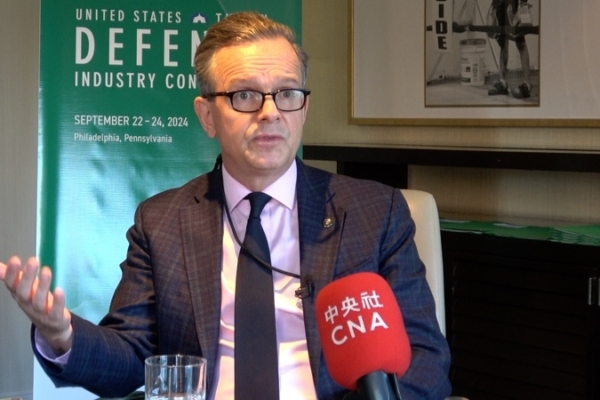The U.S.-Taiwan Defense Industry Conference concluded with the proposal for joint weapon production between the United States and Taiwan gaining traction. According to Rupert Hammond-Chambers, President of the US-Taiwan Business Council, the collaboration on weapon production was one of the most vigorously discussed topics. He noted that while both governments are fully committed to this development, the execution involves highly complex factors such as technology transfer, cost-effectiveness, and market sales.
The conference, organized by the US-Taiwan Business Council, ended on September 24th. Hammond-Chambers stated in an interview after the event that joint weapon production was one of the most heatedly debated issues.
Officials representing the governments of Taiwan and the United States, such as Deputy Minister of Armaments Xu Yanpu from the Ministry of National Defense of Taiwan and Jedidiah Royal, the Principal Deputy Assistant Secretary of Defense for Indo-Pacific Security Affairs at the Pentagon, highlighted joint production in their respective speeches.
Xu Yanpu called on the U.S. to relax technology export controls to facilitate Taiwan’s accelerated development and production of critical weaponry. He emphasized the close cooperation between the two sides on relevant issues and stated that progress is already being made.
Royal announced the establishment of the “Partnership for Indo-Pacific Industrial Resilience” (PIPIR) involving the U.S., its Indo-Pacific and European allies, with Taiwan’s participation. He also mentioned that the drone industry is a step to help Taiwan enhance its military industrial capabilities.
Hammond-Chambers emphasized the unwavering commitment of both governments to promote joint weapon production. The U.S. inclusion of Taiwan in the PIPIR initiative signifies a significant development.
“This reflects Taiwan’s expanding political space within these new platforms. There is decreasing opposition from participating countries against Taiwan’s inclusion, which is an encouraging trend.”
The new PIPIR initiative is led by the Pentagon. As per information on the Pentagon’s website, 12 countries have signed a declaration committing to enhance the resilience of the defense industry through bilateral and multilateral actions like reducing cooperation barriers, promoting innovation, information sharing, and capacity building.
Royal did not specify the form of Taiwan’s participation in the PIPIR initiative but stated that Taiwan would play a significant role. The Pentagon is planning to convene the inaugural meeting in Hawaii approximately two weeks later.
Hammond-Chambers noted that Taiwan’s involvement in the PIPIR initiative is a positive step towards joint weapon production with the U.S. However, addressing the issue of U.S. technology release is the primary challenge, requiring coordination among various government bodies including Congress, the Department of Commerce, the State Department, and the Department of Defense.
He mentioned other issues such as determining which Taiwanese manufacturers will produce the weapons, the economic scale of production, and identifying markets for surplus production. Historically, the U.S. has opposed Taiwan selling self-produced weapons to other countries. If this stance doesn’t change, surplus weapons manufactured by Taiwan can only be sold back to the U.S., which can help supplement insufficient U.S. inventory. However, politically, it may pose some challenges as these weapons are not U.S.-made.
He added that Taiwan produces high-quality missiles with potential global market demand. Even if the U.S. allows Taiwan to sell self-produced weapons, the “One China Policy” stance of other countries may hinder arms sales to Taiwan.
“All these significant issues need resolution, and we are currently in the early stages of addressing these challenges.”
Hammond-Chambers observed that it is no longer a question of whether the U.S. and Taiwan will engage in joint weapon production but rather a matter of determining which weapons to produce and when production will commence. He noted a substantial level of determination from the governments of both countries during this year’s U.S.-Taiwan Defense Industry Conference, resembling the cooperation between the U.S. and its allies like Japan, Australia, and others on this issue.

